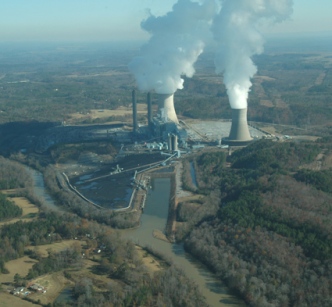AGAINST THE WIND: Senator Williams’ proposed government regulations will keep pressure on Alabama’s water resources
In Alabama, we use more of our water to keep the lights on than we use for anything else. That is because our current sources of energy require large amounts of water to generate power. Recently, developers have been looking to Alabama as a place to produce wind energy, a source that uses no water to create energy. The Alabama Senate is currently considering a bill by Senator Williams of Gadsden (SB12) that enacts unfair, burdensome regulations that will, in effect, prevent the development of wind energy anywhere in the state.
The Alabama Rivers Alliance works to protect our state’s water resources, so we are urging the legislature to oppose Senator Williams’ bill in its current form. By intentionally implementing heavy handed government regulations for wind energy generators that don’t apply to any other energy producers, this proposed legislation would effectively foreclose the use of wind energy in Alabama and thereby “lock in” the threats to Alabama’s water resources from current methods of power production. Because of the ongoing issues facing the water resources of this state and the considerable impact that power production has on these resources, this is an issue that deserves the attention of our elected representatives.
While there are many debatable issues associated with energy production in Alabama, water use within the sector is too often overlooked. According to the latest United States Geological Survey report on water use in Alabama, about 83% of the water withdrawals in the state are for thermoelectric power generation. Almost all of the thermoelectric-power water use (about 8,274 Million Gallons per Day (Mgal/d)) was from Alabama’s rivers. [1]
By contrast, public water supply, the next highest sector with 802 Mgal/d, accounts for only 8% of our states water withdrawals. This overburden of our water resources from one sector presents three obvious challenges: it places our state’s energy security at risk by over relying on a naturally variable resource; it limits growth in other water dependent sectors, such as industry and agriculture, by tying up the water resources for power generation; and it threatens the state’s environment and water dependent industries, including those in the Mobile Bay region, by unnecessarily altering the natural flow of our state’s rivers.
Additionally, a significant portion of the water used for electric generation comes from the Coosa, Tallapoosa, Chattahoochee, and Tennessee Rivers which are entangled in water disputes with our neighboring states. According to a 2013 report by the Energy and Water in a Warming World Initiative entitled “Water-Smart Power: Strengthening the U.S. Electricity System in a Warming World,” continued reliance on water-using power plants could result in a 24% reduction in stream flows in the Alabama-Coosa-Tallapoosa (ACT) Basin by 2050 and a 17% reduction in flows in the Apalachicola-Chattahoochee-Flint (ACF) Basin.[2] This report highlights Alabama’s vulnerability to placing too much reliance on our current water-intensive power systems.
In contrast to coal, gas, nuclear, and hydropower generation, wind power will not impact our water resources. Wind energy offers an opportunity to diversify our energy production portfolio and free up or reduce the burden on our state’s water resources. According to the US Department of Energy, achieving a 20% share of energy production by 2030 would reduce cumulative water use in the electric sector by 8%.[3] In Alabama that could be a savings of over 600 million gallons of water per day.
Likewise, the Energy and Water in a Warming World Initiative found that a significant transition to renewable energy along with improvements in efficiency could result in at least a 50% reduction in water withdrawals for energy production by 2030 with a potential 90% reduction by 2050.
The Alabama Rivers Alliance does not oppose the idea of fair regulation of energy production. However, as Alabama develops a comprehensive plan for our state’s water resources, our focus should be on managing the burden on our water resources. With this in mind, the state should evaluate all energy sources to determine the best way to keep the lights onand keep our rivers flowing. Due to the overwhelming potential positive impacts from wind energy to preserving our water resources, we encourage the Legislature to oppose Senator Williams’ regulation in its current form.
About the Alabama Rivers Alliance
The Alabama Rivers Alliance is Alabama’s statewide, nonprofit, water protection organization. Networking over fifty grassroots water protection organizations across Alabama at the local level and advocating smart planning and reasonable laws at the state level, we work to ensure healthy waters for future generations by empowering the citizens of Alabama to protect our waterways.
About Mitch Reid
Mitch Reid is the program director for the Alabama Rivers Alliance. Mitch is from Bellwood, Alabama, a small town in Southeast Alabama right on the Choctawhatchee River in Geneva, county. A graduate of the United States Military Academy at West Point and the University of Alabama School of Law, he works with both the state and federal governments towards real and lasting protection of Alabama’s rivers.
Alabama Rivers Alliance
www.eere.energy.gov/informationcenter



